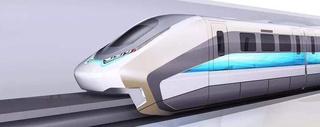Japanese Maglev Evolution 1972 - 2020
Japan has been researching maglev technology since the beginning of the 60's with a clear goal of creating a super fast connection between Tokyo and Osaka within less than an hour. The Japanese National Railways (JNR) started their research on a magnetic levitation railway system in 1962. The development of their own superconductive system, the SCMaglev, began in 1969. The first prototype vehicle, the LSM200, was tested in 1972 shortly followed by the ML100 that you can see on our infographic below.
Reaching speeds of up to 60 km/h (37 mph) at the Railway Technical Research Institute the ML100 was a project of showing that the technology works. Things have quickly changed when the new 7 km long test track in Miyazaki has been built. The MLU001 model reached a top speed of 400.8 km/h (249 mph) in 1987 and kept slowly progressing with the development of modern maglev trains.
The next breakthrough came with the construction of the 42.8 km (26.6 miles) long Yamanashi maglev test line. The MLX01 broke the speed record at the time with 531 km/h (330 mph) in 1997. Nearly two decades and a completely new vehicle, the 0-Series had to be developed to achieve the next huge milestone. In 2015 this new maglev train set the world speed record for all trains with the top speed of 603 km/h (375 mph).
Japanese Maglev Vehicle List
- 1972 – LSM200
- 1972 – ML100
- 1975 – ML100A
- 1977 – ML500
- 1979 – ML500R (remodeled ML500)
- 1980 – MLU001
- 1987 – MLU002
- 1993 – MLU002N
- 1995 – MLX01 (MLX01-1, 11, 2)
- 1997 – MLX01 (MLX01-3, 21, 12, 4)
- 2002 – MLX01 (MLX01-901, 22)
- 2009 – MLX01 (MLX01-901A, 22A: remodeled 901 and 22)
- 2013 – L0 Series Shinkansen
- 2020 – Revised L0 Series Shinkansen

L0 Series Shinkansen Maglev Train
The fastest train in the world is built on the SCMaglev system, and it is produced by Mitsubishi Heavy Industries and Nippon Sharyo. It was unveiled in November 2012. The maximum service speed will be 500 km/h (311 mph) and the total length is 299 meters (980.9 ft) with the 12-car trainset setup. It will be able to carry a total of 728 people on the future Chūō Shinkansen maglev line that connects Tokyo with Osaka. The travel time will be just 67 minutes.
The extensive tests involve long distance traveling. The record length run in a single day is 4,064 km (2,525 miles). The first line between Tokyo and Nagoya is planned to be open in 2027.

2020 Improved L0 Series Maglev Train
This is the refreshed design of the Improved L0 Series. This is the first L0 series to receive power from the guideway, through induction (wireless power transfer). The new front ends are more aerodynamic due to the removal of the exhaust vent and they got larger cameras.

L0 Series Maglev Train Interior
The future interior of the L0 Series train. It will have 68 seats in one car.





